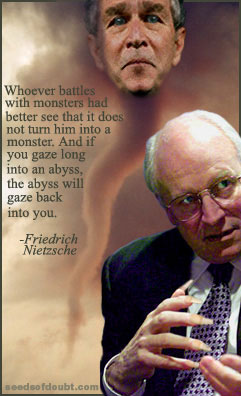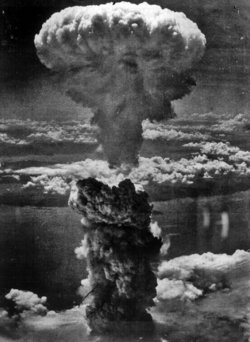As election season nears, efforts to upgrade voting machines bog down
About half the states missed a deadline to replace old apparatus. California is one racing to comply.By Daniel B. Wood | Staff writer of The Christian Science Monitor
LOS ANGELES - Shattered by Florida's "chadgate" experience in the 2000 presidential election, voter confidence nationwide plummeted and pundits declared America's democracy "at a crossroads."
Five years later, roughly half the states are not in compliance with the federal law that was designed to restore faith in voting. The Help America Vote Act of 2002 (HAVA) has provided states with $3.1 billion in funding to replace punch-card ballots with modern electronic machines and ensure that blind and disabled voters can independently cast secret ballots using the new technology, among other mandates. HAVA's deadline passed Jan. 1.
Along with the push to test and install these machines are questions about their security, reliability, and accuracy. To address this, about 25 states including Ohio and California are requiring paper verification (so-called VVPAT for "voter verified paper trail") of results. It is a process adding time, money and, in California, widespread confusion and anxiety as 58 county registrars race to get their machines ready for the state's June primary election.
Preparing for the June 2006 electionIt will be California's first election that must meet HAVA mandates, replacing punch cards and providing user-friendly machines for blind and disabled voters. But testing and purchase of the machines is being delayed because of additional state requirements for printed records of each vote. As a result, many voting officials are concerned about federal lawsuits as well as disgruntled, disabled voters.
"We are in limbo, we are in uncertainty, and we are getting more frustrated by the day," says Kristin Heffron, chief deputy registrar recorder/county clerk for Los Angeles county. "We have a federal deadline that just passed, a state deadline that is coming, and we are scratching our heads over what to buy while the state tries to certify machines that meet their standards."
California secretary of State officials say they are still determining which of about seven different brands of voting machines - including touch-screen and optical scan devices - will be certified.
In turn, they are waiting for federal officials to finish their own certification of approved machines and also examining how to add paper printouts to the state's existing voting machines to meet the state's deadline this summer.
Pressured by voters, politicians, vendors, and voting officials, federal agents say they are putting the machines through rigorous tests of software and hardware.
In the 2004 presidential election, widespread voter anger flared after the votes were counted in Ohio, as new doubts surfaced about how to conduct a recount on electronic voting machines that had no way of verifying votes.
"The American voting public has really gone full circle on this issue," says Dan Seligson, editor of Electionline.org, which has been tracking election reform. "After 2000, where people wanted to eliminate the need for paper and punch cards and older systems they felt weren't reliable. Then in the past few years there is growing concern with electronic systems. Federal and state officials are caught in the middle trying to address all these concerns."
A paper trail to count votesA California think tank called the state's mandate for paper records of all ballots one of the top 10 policy blunders of 2005.
"Passing sweeping laws ... to require voter-verified paper trails for touch-screen machines, though well intentioned, could bankrupt cash-strapped counties and may erode the efficiency of electronic voting management," says Vince Vasquez, who coauthored the briefing paper for the Pacific Research Institute in San Francisco.
Part of the growing cost comes because the state must purchase machines that meet both the paper trail and disability requirements. Some questions are still unanswered including how blind people can verify that a piece of paper has correctly recorded their electronic votes.
"As a nation we are in a very difficult situation right now because states and counties have had ample time to comply with HAVA laws but are being hindered by VVPAT requirements," says Dan Tokaji, a political scientist at Ohio State University who has been tracking US election reform. "At the moment, it is very difficult if not impossible to comply with VVPAT and the disability requirements given the existing state of technology."
Academics, computer science associations, and others have argued that a voter verification paper trail is necessary because public trust in the vote-count systems is paramount for a return to more participation in elections.
"Imagine the scenario where as a voter you choose candidate A, but the machine scores it for candidate B and yet displays a vote for A," says David Dill founder of VerifiedVoting.org. "If you try to recount it later without any paper verification, the machine will keep telling you the same thing over and over."
California waits for word on machinesIn the meantime, California state and county officials are trying to assure that the June election can go forward.
"We are still waiting to receive many machines that are in federal testing," says secretary of State spokeswoman Jennifer Kerns. Two models - the ESNS Unison and the Sequoia Edge System - will need another 55 days of state testing.
The window for election planning gets smaller every day. Only after the machines pass inspection can they be purchased and allotted to county personnel, who carry out elections.
If states are not in compliance with the federal law, it is unclear what comes next, says Doug Chapin, director of Electionline.org.
The US Department of Justice could extend the deadline but would likely not leave it open- ended.
Full HTML version of this story which may include photos, graphics, and related links







No comments:
Post a Comment